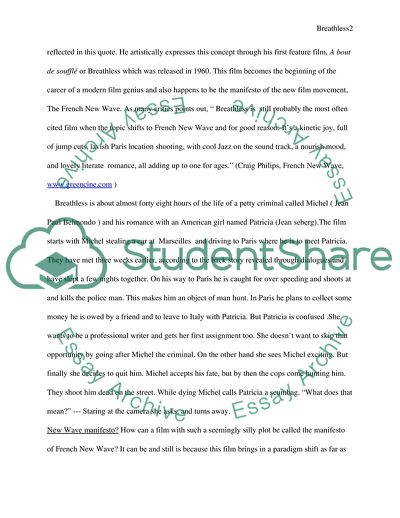Cite this document
(The French New Wave Essay Example | Topics and Well Written Essays - 1500 words, n.d.)
The French New Wave Essay Example | Topics and Well Written Essays - 1500 words. https://studentshare.org/visual-arts-film-studies/1721457-fren-new-wave-cinema-textua-analysis-of-a-film
The French New Wave Essay Example | Topics and Well Written Essays - 1500 words. https://studentshare.org/visual-arts-film-studies/1721457-fren-new-wave-cinema-textua-analysis-of-a-film
(The French New Wave Essay Example | Topics and Well Written Essays - 1500 Words)
The French New Wave Essay Example | Topics and Well Written Essays - 1500 Words. https://studentshare.org/visual-arts-film-studies/1721457-fren-new-wave-cinema-textua-analysis-of-a-film.
The French New Wave Essay Example | Topics and Well Written Essays - 1500 Words. https://studentshare.org/visual-arts-film-studies/1721457-fren-new-wave-cinema-textua-analysis-of-a-film.
“The French New Wave Essay Example | Topics and Well Written Essays - 1500 Words”. https://studentshare.org/visual-arts-film-studies/1721457-fren-new-wave-cinema-textua-analysis-of-a-film.


